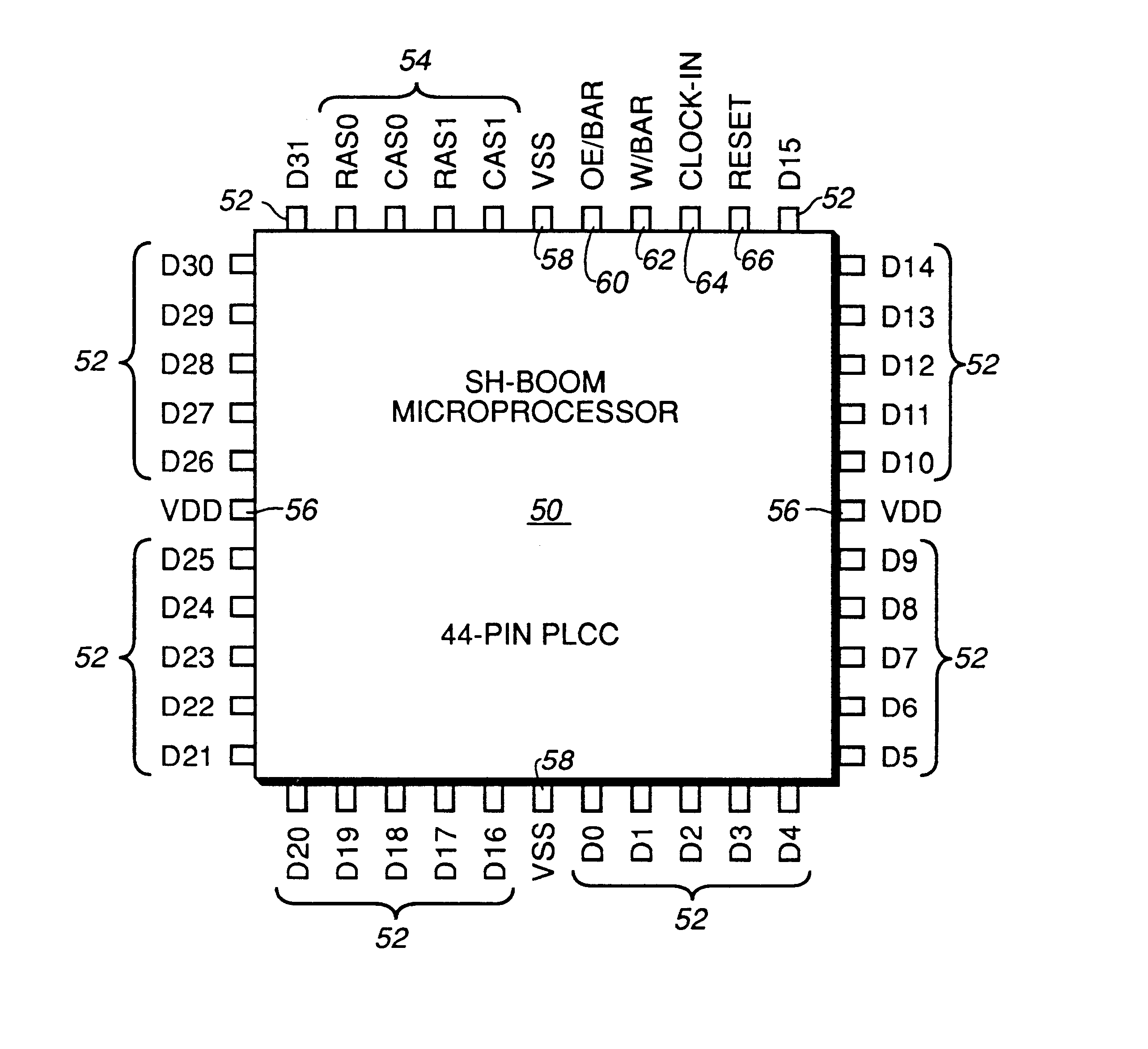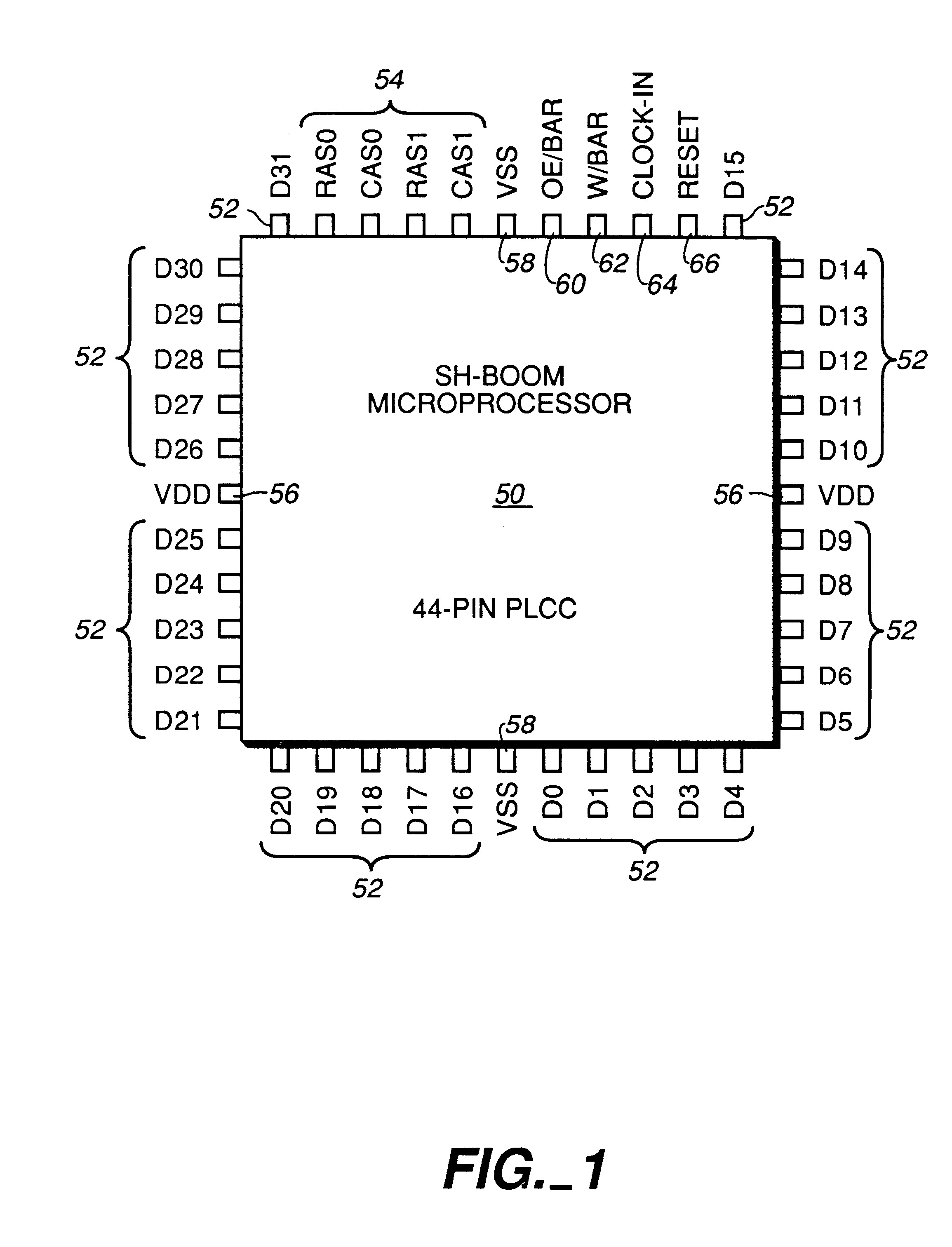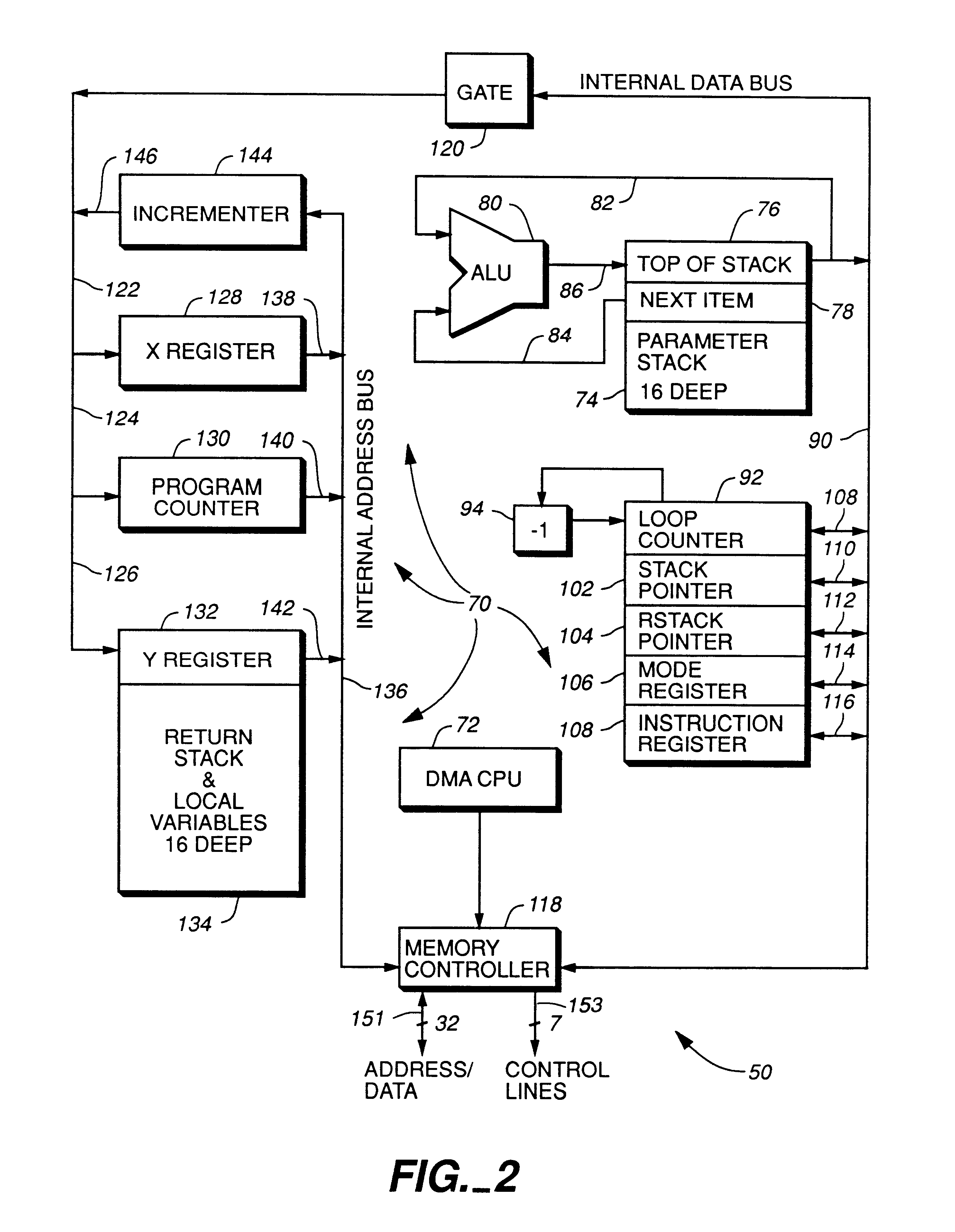High performance microprocessor having variable speed system clock
a microprocessor and variable speed technology, applied in the direction of memory address/allocation/relocation, instruments, and processing data according to predetermined rules, can solve the problems of affecting transistor propagation delay, clumsy operations, and fast cod
- Summary
- Abstract
- Description
- Claims
- Application Information
AI Technical Summary
Benefits of technology
Problems solved by technology
Method used
Image
Examples
example 1
The "QQQQQQQQs" in Byte 1 and 2 indicate space in the 4-byte memory fetch which could be hold two other instructions to be executed prior to the CALL instruction. Byte 3 indicates a CALL instruction (six zeros) in the current page (indicated by the 11 bits). Byte 4 indicates that the hexadecimal number 98 will be forced into the Program Counter bits 2 through 10. (Remember, a CALL or BRANCH always goes to a word boundary so the two least significant bits are always set to zero). The effect of this instruction would be to CALL a subroutine at WORD location HEX 98 in the current page. The most significant 22 bits of the Program Counter define the current page and will be unchanged.
example 2
If we assume that the Program Counter was HEX 0000 0156 which is binary: 00000000 00000000 00000001 01010110 =OLD PROGRAM COUNTER. Byte 1 indicates a BRANCH instruction op code (000001) and "01" indicates select the next page. Byte 2,3, and 4 are the address operand. These 24-bits will be shifted to the left two places to define a WORD address. HEX 0156 shifted left two places is HEX 0558. Since this is a 24-bit operand instruction, the most significant 6 bits of the Program Counter define the current page. These six bits will be incremented to select the next page. Executing this instruction will cause the Program Counter to be loaded with HEX 0400 0558 which is binary:
00000100 00000000 00000101 01011000 =NEW PROGRAM COUNTER.
INSTRUCTIONS
CALL-LONG
0000 OOXX - YYYYYYYY - YYYYYYYY - YYYYYYYY
Load the Program Counter with the effective WORD address specified. Push the current PC contents onto the RETURN STACK.
OTHER EFFECTS: CARRY or modes, no effect. May cause Return Stack to force an ex...
example
In this example, QQQQQQQQ indicates any other 8-bit instruction. When Byte 1 is executed, binary 00001111 (HEX Of) from Byte 4 will be pushed (right justified and padded by leading zeros) onto the Parameter Stack. Then the instructions in Byte 2 and Byte 3 will execute. The microprocessor instruction decoder knows not to execute Byte 4. It is possible to push three identical 8-bit values as follows:
PUM
 Login to View More
Login to View More Abstract
Description
Claims
Application Information
 Login to View More
Login to View More - R&D
- Intellectual Property
- Life Sciences
- Materials
- Tech Scout
- Unparalleled Data Quality
- Higher Quality Content
- 60% Fewer Hallucinations
Browse by: Latest US Patents, China's latest patents, Technical Efficacy Thesaurus, Application Domain, Technology Topic, Popular Technical Reports.
© 2025 PatSnap. All rights reserved.Legal|Privacy policy|Modern Slavery Act Transparency Statement|Sitemap|About US| Contact US: help@patsnap.com



